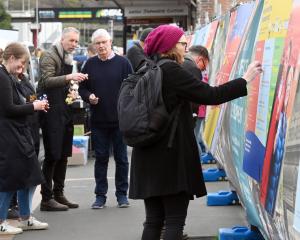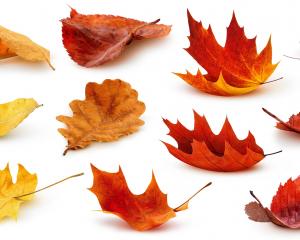A Dunedin fashion designer is one of only two from New Zealand showcasing their sustainable fashion at Eco Fashion Week Australia, the first international eco-fashion event in the region, writes Frederique Gulcher.
Using recycled tent canvas and everyday waste items collected from the streets, Dunedin designer Fiona Clements is creating designs that will hit the eco-catwalk in Australia.
Clements, of label Senorita AweSUMO, is finalising the 11-piece collection in her Vogel St studio for Eco Fashion Week Australia, in Perth later this month. She will be joined there by Heke Designs, from Waiheke Island.

While the event name suggests an Aussie-focus, organiser Zuhal Kuvan-Mills, of Green Embassy, a haute couture eco brand, has invited designers, artists, activists, media and businesses from around the world.
The idea is to raise awareness of environmentally-conscious "slow fashion" in the region, highlighting innovation, avant-garde design and education. Runway shows will present the best in organic, handmade, local, "re/up-cycled", fair-trade, ethical fashion and textiles.
There will also be discussions, exhibitions and hands-on workshops.
The criteria to participate in the show is strict. As well as meeting organic and fair-trade specifications, all items must be crafted from locally made or locally-sourced materials, a big ask for New Zealand, where very little fabric is milled nowadays.
Clements, whose clothing is created from upcycled and sustainable materials, has been sourcing fabric for the collection for two years, starting soon after meeting Kuvan-Mills.
"Zuhal and I met at Eco Fashion Exposed [New Zealand’s eco-fashion week, last held in 2014] and we have kept in contact since then. When she first mentioned the idea [of an international eco show], I was willing to support her in making it happen."
Like any designer, Clements has a distinct ethos and a style, described as Grecian goddess with simple lines, so not just any fabric will do. The garments also feature creatively-used waste, such as plastic bags, straws and containers.
"I am always trying to find ways to bring the environment to the forefront of people’s thinking with my work," she says.
The majority of the fabric came from Otago Museum, which supplied
materials used in the 2016 exhibition "Who Cared? Otago Nurses in WWI", an exhibition developed in collaboration with Otago Polytechnic bachelor of design students.
"That tent canvas has been my main substrate and I am pairing that with some hemp and organic cotton fabric, and also found materials such as ubiquitous plastique [sic] I’ve found on the streets," Clements says.
It has been both an interesting and disheartening experiment to see what waste people commonly throw on the ground. ‘‘Why don’t we care about our surrounding environs enough to just hold on to it and put it in the nearest bin?’’ Clements says.
"The quantity and the prevalence [of waste] every day makes me sad."
This is more than just wearable art or recycling. For Clements and Kuvan-Mills, the motivation is a firm belief that the fashion industry should be regenerative and responsible.
"It’s time fashion took responsibility for its plunder and degradation, as other industries must too," Clements says.
"That is very important to me as I believe we are at a crisis point and need to take a globally collaborative approach to solve that."
She talks about bringing the kaupapa of kaitiakitanga, or guardianship, to a global conversation and collaboration about closed-cycle fashion and zero-waste innovation.
These may be lofty goals but Clements says there is a growing consciousness around sustainable living and fashion, including zero waste.
Kiwis spend about $4 billion annually on domestic (not corporate) clothing, about 100 million kilograms of that going to landfill as textile waste, according to the Ministry for the Environment.
A large percentage of the waste can be refashioned, whether through creative upcycling such as Clements does, or downcycling that turns unwanted fabric into yarn. Taking a step back, the idea of slow fashion is also about being mindful about who made your clothes and how, holding on to items longer and making them last before disposing of them, the antithesis of mainstream quick-turnaround fast fashion.
Fashion Revolution Week, an annual international awareness campaign that marks the anniversary of the Rana Plaza disaster, highlights the sweatshop conditions of fast-fashion manufacture and calls for greater transparency around clothing manufacture.
More than 1000 garment makers working in Rana Plaza were killed or injured in 2013 when the already-crumbling Bangladeshi factory collapsed.
There are New Zealand brands that have transparent sustainable garment manufacture models, but few are locally made or focused on regeneration and zero waste.
Clements believes New Zealand needs more sustainable fashion innovators.
"We have many problems in the fashion industry, so there are lots of gaps to be solved by new designers. Transparency of where material comes from is also key."
It is hoped that events such as Eco Fashion Week Australia provide a spur.
Peak Plastique
• Fiona Clements is staging a sneak peak open photo shoot this evening at 6pm, where people will be invited to take photos and share them.
Venue: 88 Vogel St, under the Jetty St overbridge.















